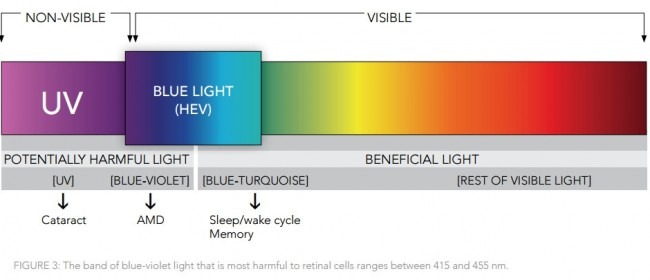More than ever, we see extensive use of computers, television, tablets and smart phones. A report produced by The Vision Council says nearly 70% of U.S. adults experience some form of digital eye strain. Although 60% of adults spend more than six hours in front of digital devices daily, 41% have never tried to reduce the digital eye strain. If you’re one of the nearly four in 10 millennials or one-third of Gen Xers that spend at least nine hours on a digital device each day, you could be putting the health of your eyes at serious risk. Here are some tips on digital eye strain and how to prevent it.
The simplest way to try and avoid digital eye strain is take breaks from staring at your computer screen as often as you can. However, guidelines differ on exactly how often you should take a break from your display.
For example, The Canadian Ministry of Labor suggests a five–minute break away from computer operation for every hour worked.
The UK’s Health and Safety (Display Screen Equipment) Regulations states that visual display unit users should be given “short, frequent breaks,” as they are “more satisfactory” than occasional, longer breaks. The HSE suggests a 5-10 minute break after 50-60 minutes continuous screen and/or keyboard work.
If you struggle to remember to take breaks, to try and get into a routine of doing so, you could set a timer to remind you.
Common Symptoms
Common symptoms of digital eye strain include:
- Dry Eyes
- Blurred Vision
- Headaches
- Neck, Back, and Shoulder Pain
Preventive Measures
- Adjust the brightness of devices and change background colors from bright white to cool gray. Attaching a glare reduction filter to a computer screen can be beneficial
- Reduce glare by keeping screens dust-free
- Adjust the screen so that it is directly in front and slightly below eye level
- Position the device for sufficient distance (20-26“) between eye and screen
- Use an adjustable chair
- Choose screens that can tilt and swivel
- Use a document holder. Position close enough to prevent considerable head movement or change in eye focus
- Use lights that reduce glare and reflection
- Reduce the amount of overhead and surrounding light that is competing with the devices screen
- Increase text size to better define the content on the screen and adjust settings until your eyes feel comfortable
- Blink often. Staring at screens can effect blinking frequency which causes eyes to dry
- The Vision Council advocates a “20-20-20 break”: Every 20 minutes, take a 20-second break and look at something 20 feet away.
- Visit an eye doctor for an eye exam to detect any potential vision issues
Here at NARFA, we strive to provide you with the best updates, relevant news and articles to keep you in the know about issues that could affect your employees and your business. Since 1929 our members have enjoyed best in class employee benefits solutions and much more. From unmatched administrative support, to our buying power for products such as health insurance, we are proud of our 99% member retention rate and continuous strength even during uncertain times.
Please contact us today to learn more about our great programs.
Thanks to our friends at Mashable for some of the content in this piece.
Recent Posts
The U.S. Department of Labor Announces Proposed Rule To Protect Indoor, Outdoor Workers From Extreme Heat
The U.S. Department of Labor has proposed a new rule aimed at protecting workers from extreme heat hazards. This initiative seeks to safeguard approximately 36 [...]
Supreme Court Overturns Chevron Deference: What It Means for Workplace Safety and Regulation
The landscape of federal regulation is set for a seismic shift following a recent Supreme Court decision. On June 28, in Loper Bright Enterprises, et [...]
Navigating the Compliance Maze: How NARFA Simplifies Employee Benefits for Automotive and Trade Industries
In today's complex regulatory environment, businesses in the automotive, roads, fuel, and related industries face unprecedented challenges in managing employee benefits. Recent studies show that [...]




